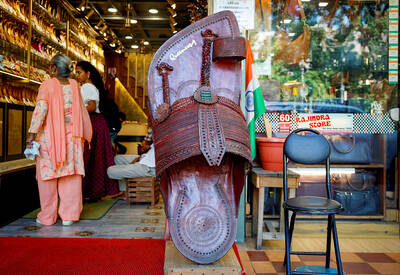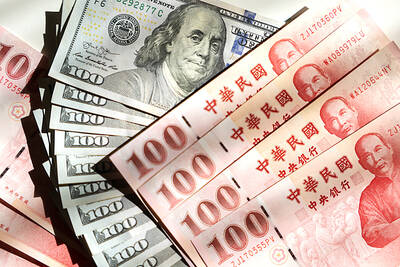Hong Kong is the place most at risk of a property bubble, according to a ranking from UBS Group AG.
Munich, Toronto, Vancouver, Amsterdam and London are the next most vulnerable in the bank’s Global Real Estate Bubble Index of 20 major centers for this year.
Prices rising at an average of 35 percent in major cities over the past five years have contributed to a “crisis of affordability,” the bank said. “Most households can no longer afford to buy property in the top financial centers without a substantial inheritance.”
Still, the risks are more contained than in the run-up to the global financial crisis, since mortgages are growing more slowly than during that period, and there is no evidence of “simultaneous excesses” in lending and construction, the bank said.
Investors “should remain selective within housing markets in bubble-risk territories such as Hong Kong, Toronto and London,” UBS Global Wealth Management chief investment officer Mark Haefele said in a statement.
The first cracks in the global housing boom have appeared, the report said, citing price declines in four of the eight cities listed as bubble risks last year: Sydney, Stockholm, London and Toronto.
Tighter lending and interest-rate increases brought a price rally to an abrupt end in Sydney, it said.
The Australian city and Sweden’s capital both exited the “bubble risk” category.
Overall, prices in most of the 20 cities grew “considerably” less in the past four quarters than in previous years, the report said.
However, an “explosive uptrend” was evident in the largest eurozone economies, as well as Hong Kong and Vancouver. New York was among centers deemed over-valued. Only Chicago was rated as under-valued.
Hong Kong also topped the ranking for the number of years that a skilled service worker needs to work to be able to buy a 60m2 apartment near the city center. The 22 years required compared with 15 years in London, the runner-up.
UBS assesses bubble risks by looking for signs such as prices decoupling from local incomes and rents, and imbalances in economies, such as excessive lending and construction activity, it said.
Cryptocurrency exchanges and investment funds are leasing space in several of the most prestigious buildings in Hong Kong, home to the highest rents anywhere.
Companies from BitMEX to Diginex Ltd have signed up for a combined 6,690m2 of grade A space in Central and Causeway Bay this year, according to Colliers International Inc.
That represents about 15 percent of the grade A space taken up since January on Hong Kong Island by mainland Chinese firms, which have dominated the territory’s market for prime office buildings in recent years.
Soaring rents have prompted tenants, including BNP Paribas SA and Goldman Sachs Group Inc, to seek cheaper locations for some staff.

MARKET LEADERSHIP: Investors are flocking to Nvidia, drawn by the company’s long-term fundamntals, dominant position in the AI sector, and pricing and margin power Two years after Nvidia Corp made history by becoming the first chipmaker to achieve a US$1 trillion market capitalization, an even more remarkable milestone is within its grasp: becoming the first company to reach US$4 trillion. After the emergence of China’s DeepSeek (深度求索) sent the stock plunging earlier this year and stoked concerns that outlays on artificial intelligence (AI) infrastructure were set to slow, Nvidia shares have rallied back to a record. The company’s biggest customers remain full steam ahead on spending, much of which is flowing to its computing systems. Microsoft Corp, Meta Platforms Inc, Amazon.com Inc and Alphabet Inc are

Luxury fashion powerhouse Prada SpA has acknowledged the ancient Indian roots of its new sandal design after the debut of the open-toe footwear sparked a furor among Indian artisans and politicians thousands of miles from the catwalk in Italy. Images from Prada’s fashion show in Milan last weekend showed models wearing leather sandals with a braided design that resembled handmade Kolhapuri slippers with designs dating back to the 12th century. A wave of criticism in the media and from lawmakers followed over the Italian brand’s lack of public acknowledgement of the Indian sandal design, which is named after a city in the

The US overtaking China as Taiwan’s top export destination could boost industrial development and wage growth, given the US is a high-income economy, an economist said yesterday. However, Taiwan still needs to diversify its export markets due to the unpredictability of US President Donald Trump’s administration, said Chiou Jiunn-rong (邱俊榮), an economics professor at National Central University. Taiwan’s exports soared to a record US$51.74 billion last month, driven by strong demand for artificial intelligence (AI) products and continued orders, with information and communication technology (ICT) and audio/video products leading all sectors. The US reclaimed its position as Taiwan’s top export market, accounting for

INVESTOR RESILIENCE? An analyst said that despite near-term pressures, foreign investors tend to view NT dollar strength as a positive signal for valuation multiples Morgan Stanley has flagged a potential 10 percent revenue decline for Taiwan’s tech hardware sector this year, as a sharp appreciation of the New Taiwan dollar begins to dent the earnings power of major exporters. In what appears to be the first such warning from a major foreign brokerage, the US investment bank said the currency’s strength — fueled by foreign capital inflows and expectations of US interest rate cuts — is compressing profit margins for manufacturers with heavy exposure to US dollar-denominated revenues. The local currency has surged about 10 percent against the greenback over the past quarter and yesterday breached